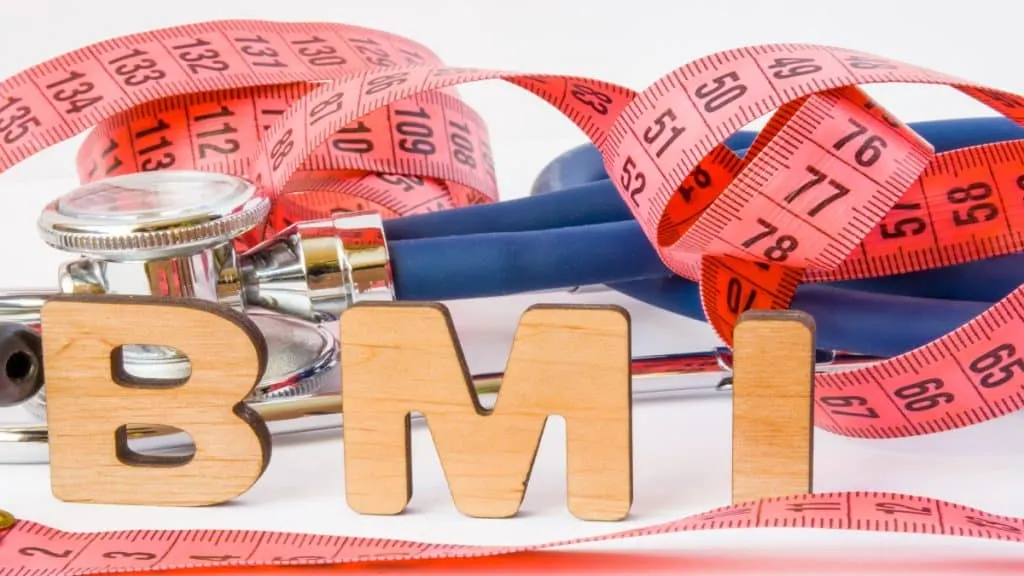If you want to find out whether or not a BMI of 22 is a healthy BMI for men and women, then this body max index guide is for you.
While BMI is a useful tool for getting a quick snapshot of how healthy your weight is in relation to your height, it can’t measure your muscle mass or body composition, meaning that two people with a 22 BMI can have very different bodies.
Is a 22 BMI good or bad for females?

Is a 22 BMI good for females? Yes, a BMI of 22 is good for women because it’s significantly lower than average and well within the healthy range.
It’s natural for women to have more body fat than men, meaning that a woman with a BMI of 22 won’t usually be as lean as a man who registers a 22 BMI score.
Of course, since BMI is just a simple bodyweight classification tool, it’s not sophisticated enough to tell you whether you’re healthy or unhealthy.
Although a BMI of twenty-two is comfortably in the normal category, your body composition (your ratio of fat to muscle) has a much bigger influence on your physical health status.
Still, all else being equal, a BMI of 22 is likely better than a high BMI because obesity is linked with high blood pressure, diabetes, and back problems.
Is a BMI of 22 good for males or not?

Is a BMI of 22 good for males? Yes, a BMI of 22 is good for men because a man who has a 22 BMI score has a healthy body weight.
Of course, men with a body mass index of 22 can look radically different from one another.
For example, you could have a lean, recreational gym goer who has a body mass index of 22. In this case, the man will likely have sufficient muscle mass and minimal body fat, which is a great physique to have.
On the other side of the coin, you might have a sedentary man who does no exercise at all.
Because of his complete lack of resistance training, he has very little muscle mass. And due to his sedentary lifestyle, he easily puts on body fat because he has a slow metabolism (compared to the more muscular man).
Now can you see why a BMI of 22 can look very different depending on the body composition of the individual?
What does a BMI of 22 actually look like?

While we can certainly give some examples of what a 22 BMI score might look like, we can’t accurately say what a BMI of 22 will look like all the time.
This is simply because your body fat percentage and muscularity will greatly influence what you look like at a given body mass index.
So if you and your friend both have a body mass index of 22, for example, it’s possible that one of you could be healthy (enough muscle mass, low body fat level) and the other unhealthy (lack of muscle mass, too much body fat).
A BMI of 22 will look more aesthetic if you’re fairly lean, which you might well be considering that a 22 BMI is much lower than average for men and women.
Related BMI 22 scores and their meaning

See more body mass index scores within the BMI 22 category.
22.1 BMI
A 22.1 BMI puts you in the normal category, meaning that you have a healthy body weight. If you’ve got a BMI of 22.1, then you don’t need to lose weight or gain weight, although altering your body composition may, in some cases, be beneficial.
22.2 BMI
If you have a 22.2 BMI, then you have a healthy body weight for a person of your stature. This is all that body mass index can tell you, so you might want to measure your body fatness by taking both skinfold and circumference measurements.
22.3 BMI
A BMI of 22.3 is well within the normal category and is a good indicator that you don’t have any weight-related health problems. In other words, you’re neither too fat nor too thin with a 22.3 BMI.
22.4 BMI
Those who have a 22.4 BMI can have varying body types (skinny, muscular, average, etc.). But one thing’s for sure; anyone with a BMI of 22.4 has a normal body weight, which is more than can be said for most people these days.
22.5 BMI
A 22.5 BMI is considered healthy because it’s two BMI points below the overweight cut-off. Likewise, a BMI of 22.5 is well above the underweight category, meaning that many people who have a 22.5 BMI will be in good health.
22.6 BMI
If you have a 22.6 BMI, then you’re over four BMI points away from the underweight category and nearly two points below the overweight classification.
22.7 BMI
A BMI of 22.7 means that your body weight is considered healthy. This fact alone doesn’t guarantee good health, but it does give you a good base to work from (i.e., if you lack muscle mass at a 22.7 BMI, you can always do more strength training without worrying about getting an excessive BMI).
22.8 BMI
A 22.8 BMI is comfortably in the healthy body weight range for males and females. But as with any body mass index, a BMI of 22.8 doesn’t guarantee perfect or even good health, but it’s likely much better than having a high BMI if you’re lean.
22.9 BMI
If you have a BMI of 22.9, then you’re still in the healthy weight range by a long way. A 22.9 BMI is a good number to aim for because most people with this body mass index are far from being obese.
The verdict: What does it mean if you have a 22 BMI score?
Having a BMI of 22 simply means that you have a healthy body weight for people of your height. Considering that most Americans have a BMI that’s way over 22, it also means that you’re lighter than average for people of your height.
And yet, registering a 22 BMI score is not a guarantee of good health because body mass index doesn’t take into account body fat or muscle mass, two crucial variables when it comes to physical health.
References
- Gilmore J. (1999). Body mass index and health. Health reports, 11(1), 31–47
- Karchynskaya, V., Kopcakova, J., Klein, D., Gába, A., Madarasova-Geckova, A., van Dijk, J. P., de Winter, A. F., & Reijneveld, S. A. (2020). Is BMI a Valid Indicator of Overweight and Obesity for Adolescents?. International journal of environmental research and public health, 17(13), 4815. https://doi.org/10.3390/ijerph17134815

